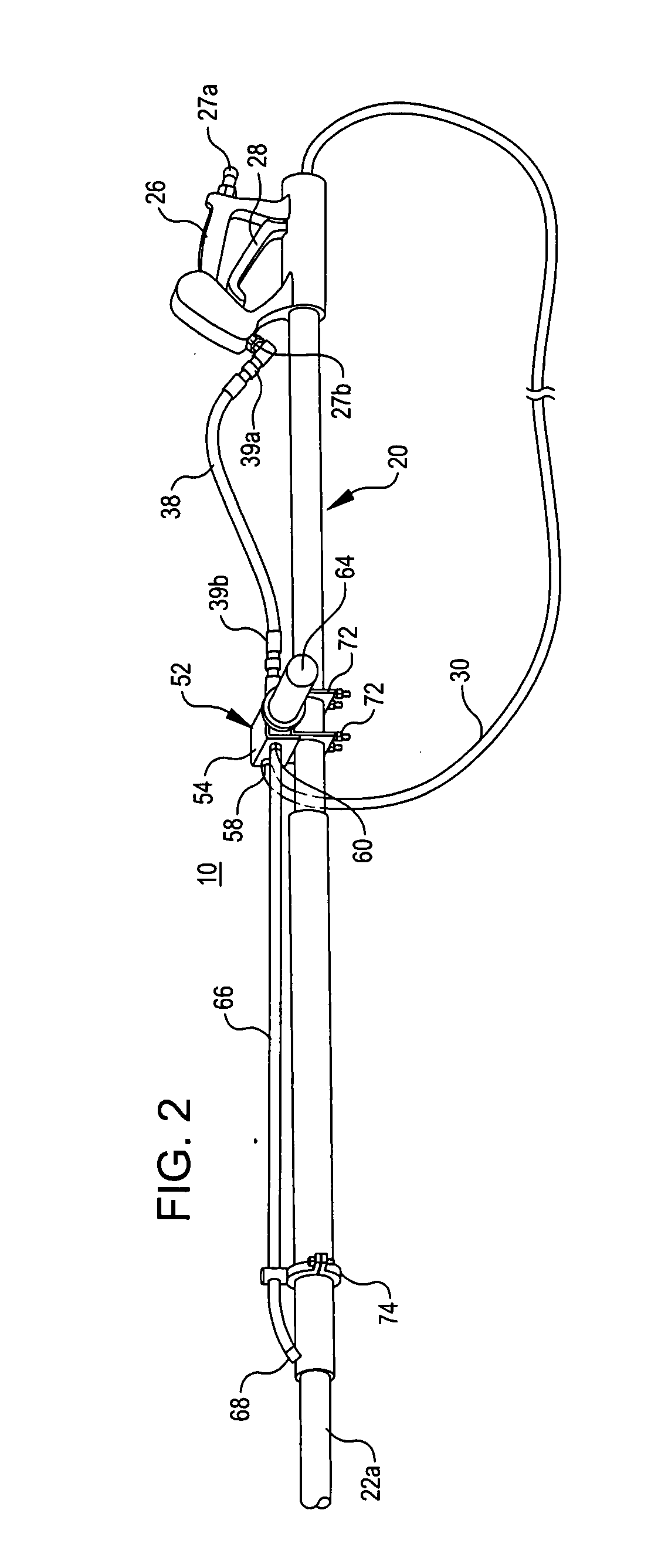Variable reactive force arrangement for pole mounted, pressure washing lances
a technology of reactive force and pressure washing lance, which is applied in the direction of positive displacement liquid engines, machines/engines, liquid cleaning, etc., can solve the problems of difficult handling of the pole, undesirable control force upon the operator, and difficulty in maneuvering the telescoping pole when the target surface is relatively distant from the operator, etc., to reduce the operator force necessary, less effort, and more efficient pressure washing activities
- Summary
- Abstract
- Description
- Claims
- Application Information
AI Technical Summary
Benefits of technology
Problems solved by technology
Method used
Image
Examples
Embodiment Construction
[0020]Turning then to the several drawings, wherein like numerals indicate like parts, and more particularly to FIG. 1, aftermarket kit 50 according to the invention is shown. Kit 50, also referred to as variable reactive force arrangement 50, comprises bypass hose 38, lance 40, bypass valve 52, dump tube 66 and associated mounting hardware collectively referred to as hardware 70. Unless otherwise noted or contrary to industry standard, all metal parts are preferably constructed from brass or chrome plated brass, and all flexible parts are preferably constructed from rubber derivatives, and are capable of operating with working pressures up to 4,000 psi.
[0021]Bypass valve 52 comprises housing 54, which defines inlet 56, primary outlet 58 and secondary outlet 60. A diverter (not shown) in housing 54, variably exposes primary and / or secondary outlets 58 and 60, respectively, to inlet 56 when diverter handle 64 is operated. As will be described in more detail below, bypass valve 52 mod...
PUM
 Login to View More
Login to View More Abstract
Description
Claims
Application Information
 Login to View More
Login to View More - R&D
- Intellectual Property
- Life Sciences
- Materials
- Tech Scout
- Unparalleled Data Quality
- Higher Quality Content
- 60% Fewer Hallucinations
Browse by: Latest US Patents, China's latest patents, Technical Efficacy Thesaurus, Application Domain, Technology Topic, Popular Technical Reports.
© 2025 PatSnap. All rights reserved.Legal|Privacy policy|Modern Slavery Act Transparency Statement|Sitemap|About US| Contact US: help@patsnap.com



